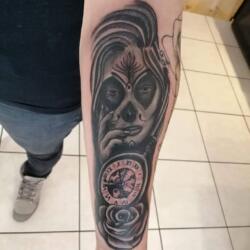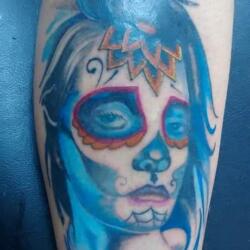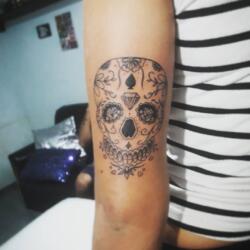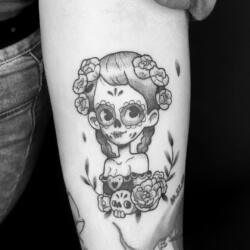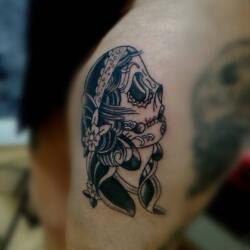Welcome to the largest gallery with Mexican Catrina Tattoos. Discover more than 40,000 different designs on all of our website. Browse through our galleries to access all the images.
Meaning of La Catrina Mexicana
Catrina tattoos are a style that little by little has made its way thanks to the meaning they contain in Mexican culture. In Mexican culture, Las Catrinas is one of the forms that death has.
In addition to representing death, these Catrina tattoos can adopt other meanings, all according to the context in which they are to be performed. Thanks to its popularity, we can currently find a variety of designs of these tattoos.
In Mexican culture, the Catrina is a way of symbolizing and representing death. In fact, as the “Day of the Dead” is celebrated every November 2 in Mexico, they are a very important symbol of the holiday.
Being part of this festival, the Catrina has taken on different meanings, but all related to death, with a hint of a joyful touch. Among its meanings we can highlight that of veneration and respect for the family that is no longer there.
They also symbolize professed love and tribute to our ancestors, as well as can be assumed as respect and fidelity towards our culture, or even towards our people.
Finally, Catrinas tattoos symbolize the lack of fear of death and the challenge that one feels towards it in any circumstance. You should know that these tattoos are also known as “Santa Muerte” tattoos.
Regardless of the meaning that you want to give to death, it should be noted that she is a very important symbol in the world of tattoos, since the designs that exist on the occasion of her are numerous.
Designs with Catrinas Tattoos
It is said that the tattoos of Catrinas are to show off, because Santa Muerte does not like to be hidden; For this reason, there is a variety of designs of all sizes with the face of a Catrina woman.
In these designs, the Catrina is usually accompanied by bright and striking colors, as well as a crown of large flowers of all colors. There are those who decide to accompany her image with more flowers and certain representative symbols.
These tattoos are usually ordered mostly by men and are generally done on the arms, as it is a place where the tattoo will be more attractive. However, there are those who choose to have it done on their back or legs.
As for the most requested designs for Catrinas tattoos, we can highlight the face of a woman, full of details and few colors where she is dressed as a virgin. Another popular design is that of the Catrina dressed in flowers or mariachi attire.
Being a representation of death, it is also very common to find very striking designs of the Catrina with a half face of a skull and accompanied by roses and showy flowers.
In addition to these designs, there are other designs that have been very popular throughout Mexico. Among them, we highlight the famous “bloody Mexican Catrina”. As her name says, she is a bloody catrina only in red and black.
We also have the image of the Catrina dressed as a bride and ready to marry, as well as the Catrina in an elegant pink Mexican dress, or the Catrina in an evening dress accompanied by a glass of wine.
However, despite all the designs with Catrina Tattoos, this can change when the tattoo is small. When the tattoo is done on the fingers of the hand, its design is much simpler.
For smaller tattoos, the Catrina consists only of a skull with a large hat accompanied by many flowers. They are generally usually colorless on the inside, or of a single color.
How did the Catrinas come about?
Before becoming a popular motif for tattoos and Mexican festivities, the Catrinas were called “Las Calaveras Garbanceras”. Their precursor was José Guadalupe posada who devised them to appear in a newspaper.
The main intention of these skulls was to call the attention of Mexican society against all the injustices that were experienced in those times. They began to be known as “Las Catrinas” thanks to Diego Rivera.
From this fact, different versions of Catrinas began to appear in all the newspapers that existed in Mexico for that date, which dates from approximately the 20th century.












